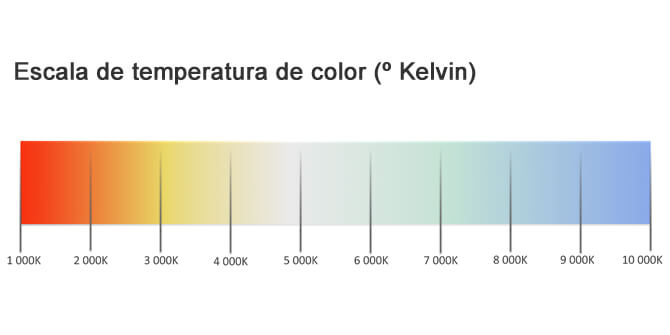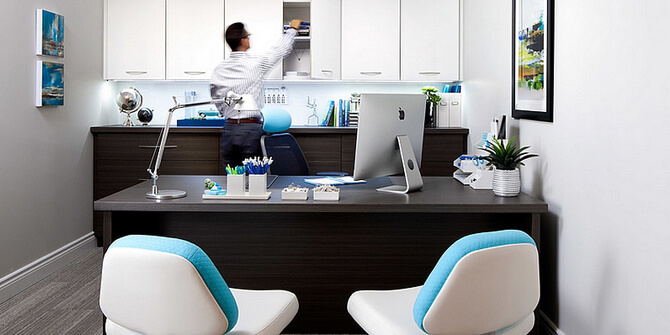The colour temperature is measured in kelvins, this measure goes from a red hue (warm light) to a blue hue (cold light), and refers to the different shades that a light source can produce.
The most common types of lights are:
– Warm light or warm white. These are all those bulbs with a colour temperature below 3500ºK that produce a reddish colour. The most common shades range from 2700ºK to 3000ºK.
– Neutral light or neutral white light. It is equivalent to the light emitted by the sun at noon, which makes it perfect for conveying a sense of cleanliness and freshness. Its temperature ranges from 4000ºK to 5500ºK.
– Cool light or cool white. It is a more bluish type of light than the others. Light bulbs with a temperature above 5500ºK are considered to be cool light.

Choose Colour Temperature According to Ambience
olour temperature directly influences the ambience of the lit up room. Depending on the type of ambience we want to achieve, we can differentiate between:
– Warm, relaxed and cosy ambience. To achieve this type of ambience, it is a good idea to use lights with a warm colour temperature.
– General office environment. In areas with greater stimulation such as a store or office, it may be interesting to install a series of neutral light bulbs. This type of light stimulates people by improving their mood, which can result in an increase in sales or higher employee performance.
It can also be used in areas dedicated to study or reading.
– Stimulating environment. Places with a continuous flow of people, such as the bathroom or kitchen, are ideal for installing light bulbs with a cool tone, more than 5500ºK.

Ideally, combine ambiences and colour temperatures according to the room in question and achieve different colour combinations.
In general, the light should be a soft tone that prevents glare. If we want to have a well-lit work area, we will need individual light sources that avoid uncomfortable shadows.




